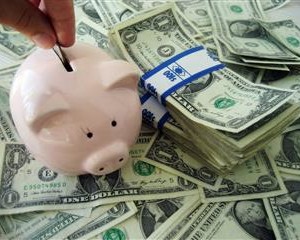This is Part 2 of 2015’s third article discussing the possibility of the I-20 Corridor becoming the next Austin, Texas, a region that enables the creation of an entrepreneurial ecosystem to support torrents of new business venture creation.


This is Part 2 of 2015’s third article discussing the possibility of the I-20 Corridor becoming the next Austin, Texas, a region that enables the creation of an entrepreneurial ecosystem to support torrents of new business venture creation.

This third article of 2015 continues our discussion of the I-20 Corridor becoming the next Austin, Texas, a region enabling the creation of an entrepreneurial ecosystem to support torrents of new business venture creation. It will come in two parts.

Last month we discussed whether the I-20 Corridor could become the next Austin, Texas, a region that enables the creation of an entrepreneurial ecosystem to support torrents of new business venture creation. Ending that article I posed a caveat to all of the good things that have happened in our region around entrepreneurship to date: For new ventures the key resource needed is money. Investment will flow to its highest expected returns adjusted for risk. Why would we expect our homegrown entrepreneurs to be better than entrepreneurs in other parts of the U.S. and world who might offer higher expected returns adjusted for risk for investors?

Austin, Texas, a vibrant community of established corporations like Dell and Whole Foods, is also a beehive and incubator of entrepreneurship and new business creation. TeVido, Square Root and Novati are only some of the business ventures born and grown via the lifeblood of an entrepreneurship community or “ecosystem” of ideas, resources and funding. Some folks in our area, which we will call the I-20 Corridor from Shreveport/Bossier to Monroe, think we can be the next Austin, Texas. Do you agree?

This last article of 2014 will cover one of my favorite topics because in my experience it can be so misunderstood. How fast and agile is your organization? These are huge drivers of firm valuation.

We go to the fitness center to build muscle strength and flexibility. Research on the brain and how it functions and improves suggests we go to the “brain gym” to build the brain’s strength, flexibility and endurance. We used to think that a person’s brain capacity for problem solving and creativity was set by the time we are eight to ten years old.

Last month’s article described the Lean StartUp Movement. But what happens next after launching your venture using Lean StartUp principles and gaining some initial traction with early adopter customers? Last month I discussed the customer or the demand side of the Lean StartUp, where it all begins. However growing or “scaling” the Lean StartUp is mostly about the supply side of the equation.

Entrepreneurship is a very hot topic globally. And it is growing in importance in Northwest Louisiana. Witness Gregory Kallenberg’s first StartUp Prize in June and July 2014 at John Grindley’s Cohab here in Shreveport. Seventy-five would-be entrepreneurs will go through one or two qualifying events to possibly earn $50,000 in prize money and/or have their ideas funded.

What do you think are the attributes of an Exceptional Organization? Do exceptional firms stay that way for long? My opinion is no – periods of sustained performance will be followed by times of trial and tribulation. This sets the seed for improvement or even turnaround before growing again.

Leadership is a topic like the Hydra’s Head from Greek mythology – cut off one head and two grow back. There are more theories of and approaches to leadership than you can possibly count. John Donahoe, then president of eBay, said “Leadership is a journey, not a destination. It is a marathon, not a sprint. It is a process, not an outcome”. So why tackle such a diverse and hard to pin down topic?

On September 19th Apple’s stock was trading at $702. On November 8th it had fallen to $538 a share. This was $154 billion in lost shareholder value in eight weeks. The culprit was expected rising costs to land their products on shelves from their factories. Now most investors and analysts thought Apple executives and managers would rebuild the lost value, and they indeed are. But a permanent destruction of shareholder value or firm valuation in the case of the private firm is something to be avoided if at all possible. Why?

If you have followed this series of articles on the strategy and leadership drivers of firm valuation, I bet many of you are saying to yourselves, “Oh oh … here comes the soft and squishy one”. But I want to demonstrate to you that people can be a source of enduring, hard-for-a-competitor to copy competitive advantage for your firm or organization.